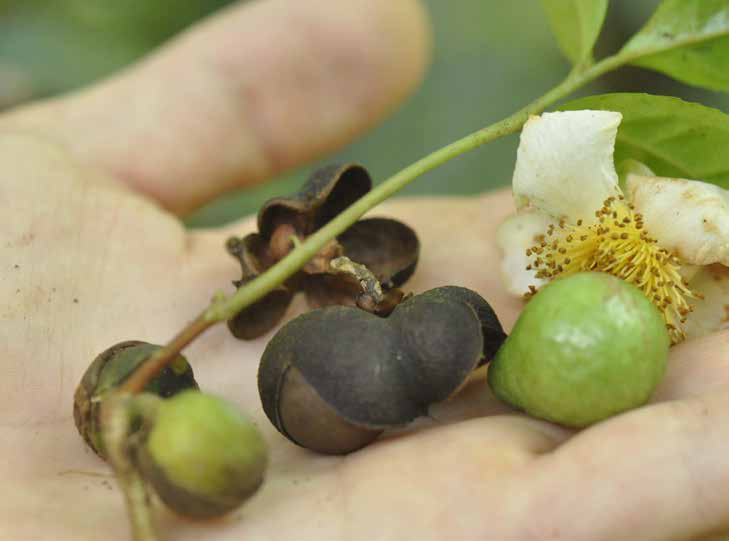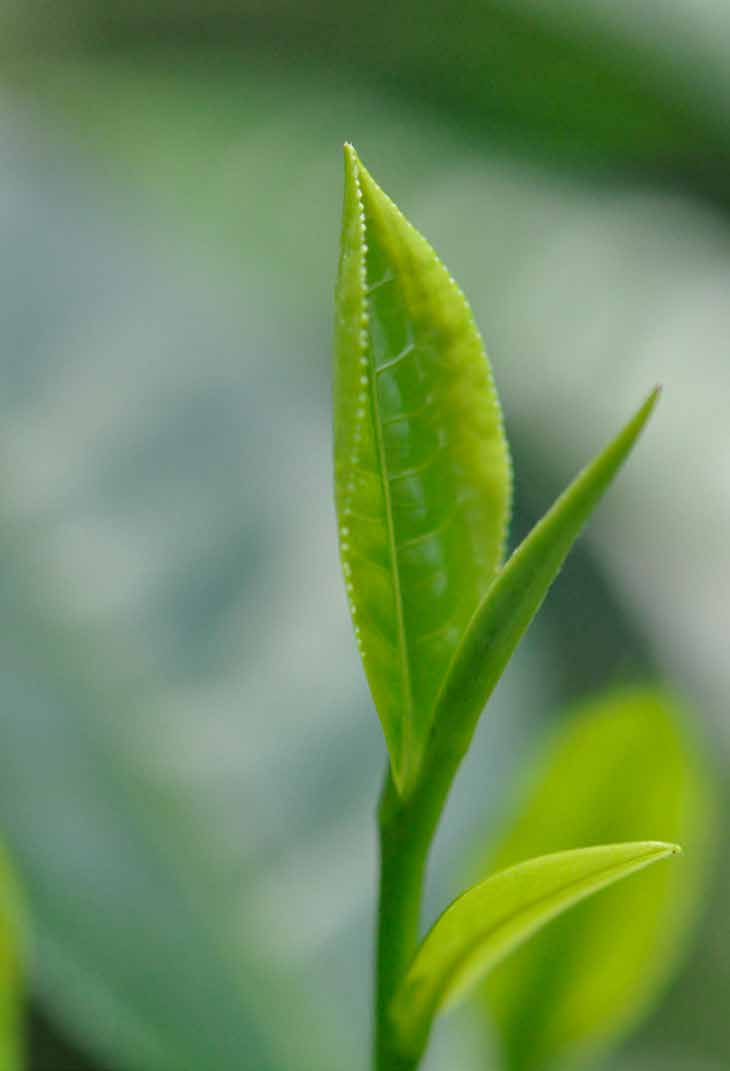
 |
|
Lunar planting has long been practiced within the realm of agriculture. Planting by the cycles and rhythms of the moon is simple, tangible, and connecting. The influences can easily be seen in animals, plants, and soil. These effects remind us of the interplay between the cosmic and the terrestrial. They highlight the beauty and splendor of the relationship between Earth and Moon. They call to our attention that Nature is Great. It's not difficult to extend this notion of cosmic relationships beyond the moon to that of the sun, with its obvious gifts of warmth and light. To consider other planetary relationships with the Earth and zodiac constellations might also be entertained by the open mind. If we take this one step further and focus our attention on agriculture in light of all of these factors, we begin to enter the realm of Biodynamics, which is the farming practice employed at Finca Luna Nueva (New Moon Farm) in Costa Rica.
Finca Luna Nueva is a sustainable rainforest eco-lodge and biodynamic farm. The farms' 220 plus acres of tropical rainforest is host to a wellspring of biological diversity. Being so close to the equator, one cannot help but notice the dense humidity, abundant rain, verdant richness, and dramatic cycles of life and decomposition. In the tropics, everything is bigger, faster, more colorful, and in greater company. It is a palpable environment for plants and animals to simply abound.

To pay tribute to such grand biodiversity, Finca Luna Nueva created a Living Seed Sanctuary; 'living' in a literal sense, and also in relation to the 'living' quality found in the tradition of Cha Dao. Imagine not some chilled seed bank in a snowy mountain cave, but a dynamic collection of over 300 medicinal plants representing and protecting both tropical and cultural biodiversity. Considering that many cultures rely on plants as medicine, it's no surprise that within this Sacred Seed Sanctuary we find the tea plant: Camellia sinensis.
I went to Finca Luna Nueva on a three-month internship to focus on Tea and Biodynamics - very uncharted territory in Central America. Coffee is king in Costa Rica, and Biodynamics is only just blooming beyond its once esoteric confinement. First, let us consider this elegant portrayal of Biodynamics:
"Bio-dynamics, though not disparaging of common sense, is concerned essentially with consciousness-expansion in regard to plants, animals and soil. The attempt is made to look into the deeper spirit of Nature. Out of this deeper awareness, based on exquisite observation of Nature, the approach calls for not letting things run their natural course, but for intensifying certain natural processes (creating optimal animal populations, making special compost preparations, planting selected companion plants at certain cosmic constellations), aiding Nature where She is weak after so many centuries of abuse, short-cutting destructive processes, and instead using human intelligence, kindness and good will to foster positive developments."
Demeter certified Biodynamic Ginger and Turmeric are the two commercial crops at Finca Luna Nueva. Besides the Sacred Seed Sanctuary, there is also a hardy cacao grove, an abundance of fruit trees, a thriving vegetable and herb garden, and a very small tea garden consisting of about eighty tea plants, of which roughly fifty are harvest-ready. There are some very special qualities about this small tea garden: The original Assamica-variety seeds were planted in 1997. They were essentially let to grow untended into trees, which the large-leaf variety naturally does. In the heat of the tropics, accompanied by ample rainfall, each seed burst forth into its own genetic uniqueness. This alone is a distinguishing factor from most tea plantations today where cuttings are the propagation method of choice. Cuttings hold true to their mother plant, genetically speaking, which may possess certain desirable qualities such as high crop yield, uniformity, pest resistance, adaptability to climate, and other such economic-driven factors.

In many cases, the crown of a plant or tree reflects that of its root system. When tea plants are pruned to a manageable height for harvest and maintenance, their root structure reflects that through shallow growth. As trees grow towards the light, their roots grow down into the depths of the soil where energy, minerals, nutrients, and abundant resources reside. At Finca Luna Nueva the plants were eventually cut back to create a plucking table. Not all of the trees were cut back, however; three were let to stand, ranging between twenty and forty feet tall. These are the trees from which they harvest seeds for further propagation. Seeds that not only contain genetic variance, but the genetic quality inherited from mother trees whose root systems reflect fifteen years of unhampered crown growth. That is poetically and literally deep.
Besides all of that grandeur, the tea gardens, along with the rest of the farm, thrive off the energy of Biodynamic farming practices. The term 'Bio-dynamic' derives from the two Greek words, 'bios' (life) and 'dynamis' (energy). Everything from planting, weeding, and harvesting, to pruning, processing, and tending can be considered in the light of Biodynamics. Whether we're harvesting near the new moon, spraying compost preparations by the alignment of Earth and Saturn, or germinating seeds near the full moon, life energies are at play. This is an organic, sustainable, and spiritual approach to raising tea.
During my time at the farm, over two hundred baby tea plants were transplanted into two beautiful gardens, and another couple hundred seeds are currently being germinated. From the harvest-ready plants, we tried our hand at processing red tea, and with such high-quality raw material, it was tough to go wrong! Without any reference for processing tea in Central America, we had fun experimenting with all the factors involved such as withering, rolling, oxidizing, and drying, not to mention harvesting by different cycles of the moon as it passed through different zodiac constellations. We thoroughly enjoyed our small-batch, handrolled tea, as did our farm guests during a Biodynamic Red Tea Workshop I gave to conclude my internship. The founder of Biodynamics understood the important role that water has to play in carrying and transmitting energies. Very precise uses of water are specified when preparing certain compost-sprays. Special stirring of rainwater introduces cosmic forces that enable the water to become a dynamic carrier of the life energy associated with a particular compost preparation. This may sound strange if you are not familiar with Biodynamics (and probably strange even if you are), but it means nothing more than this: water is sensitive and very responsive to external stimuli. Its function and structure can be altered by human attention and consciousness. If that still doesn't sit well with you, then let us also allow room for the mystery inherent in any tradition: spiritual, agricultural, or otherwise.

In the end, the underlying concern of Biodynamics lies in creating healthy living soil. As water is to tea, soil is to the tea plant. If the water is clean and pure, tea can express itself without any resistance. If soil is healthy and alive, plants will be nutritious and hardy. One need not force a good bowl of tea or try to grow healthy plants, you just need good water and soil. Accordingly, Nature will take care of the rest.
Do you think it possible to dissect a human being, render it down into its constituent parts, feed them into a machine which measures such things and determine from that its ability to paint or create great music? No? Then why do you think that once you have done this with my body you know anything about me?
